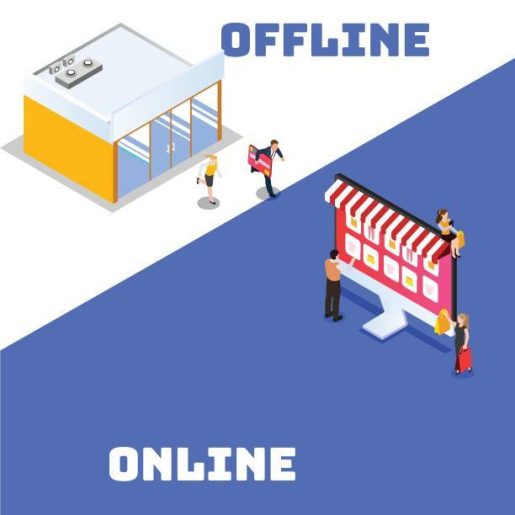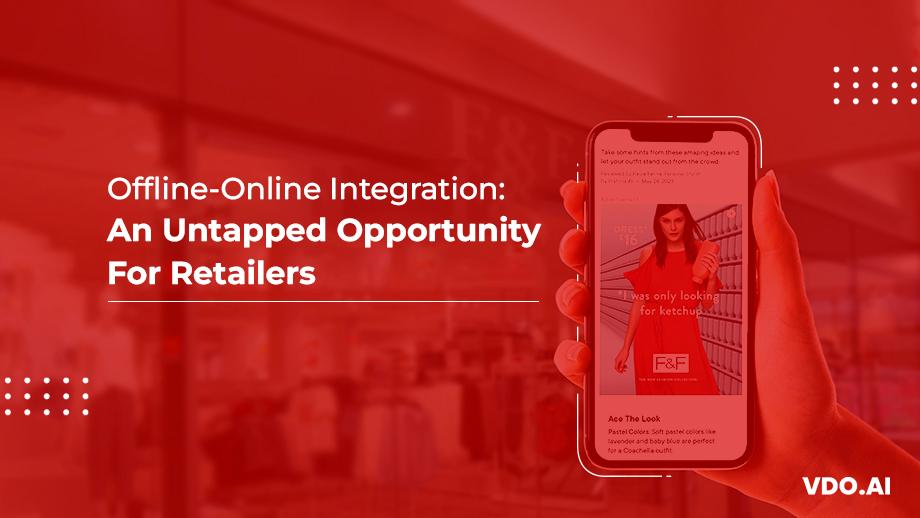Offline-Online Integration: An Untapped Opportunity For Retailers
Reading Time: 4 minutesIf you are still uncertain whether you are doing the right thing by not integrating your brick-and-mortar store with your e-commerce business, then you should rethink your strategy. Here is a detailed article for you to understand the consequences of non-integration.
Businesses are increasingly relying on online platforms to reach and engage with their customers. However, many organizations underestimate the importance of integrating their offline and online operations effectively.
According to Forbes, Online retail will account for approximately 70% in 2023, yet many businesses continue to operate solely offline or have yet to integrate their offline and online mediums into a unified platform.
Understanding Offline-Online Integration
Offline-online integration means seamless integration of a business’s offline and online operations to deliver a consistent and holistic customer experience across various touchpoints.
With a remarkable 82% of consumer buying decisions made in-store and an astonishing 90% of consumers reading online reviews before making a purchase, the importance of both offline and online mediums in shaping the decision-making process of consumers is pretty evident.
By effectively integrating these channels, businesses can leverage the strengths of both online and offline interactions, creating synergies that enhance customer engagement, increase sales, and drive overall business growth.
However, does this mean businesses are implementing this in their strategies?
Let’s take a scenario, for instance: You have a thriving brick-and-mortar store that attracts a steady stream of customers. Your online presence is also commendable, with a website and social media platforms in place. But what happens when these two aspects of your business exist independently, without integration?
The answer lies below!
Drawbacks of Neglecting Offline-Online Integration

Emerging of Data Silos
Since data isn’t stored in a single platform, you have incomplete information about your customers. This creates a lot of distance between you and your customers. Not just that, since you are not fully aware of what your customer does or prefers and through which medium, you end up making wrong decisions, which might lead to customers not returning for good.
This affects all marketing activity in your business, whether it’s targeting the right audience through new methods like contextual targeting, geo-targeting, etc, for acquiring the right set of customers.
Uni-Channel Experience
No channel today is what it was a few years ago. Customers expect companies to be active on platforms where they spend the majority of their time. By active, we don’t mean they only want you to advertise your collection or have a product page portfolio; but to be active if they want to reach out to you using that specific channel.
And that’s not possible if you are missing pieces in the puzzle. What we mean is, customers will get an unconnected, individual experience if you don’t know when and how they prefer shopping. Maybe they like ordering online and picking it up at-store or they might want to return a product they bought online that they bought at the store. Customers should have this option to decide for themselves instead of you providing it.
Lost Sales Opportunities
Let’s take this for instance, your customers cannot transition seamlessly from your website to your physical store, or vice versa, if integration doesn’t exist. Cross-channel interaction increases the chances of conversion, the absence of which leads to a loss of higher revenue potential.
Fragmented Brand Identity
This is a no-brainer. Inconsistent messaging and visuals lead to an inconvenient experience for the customer. And as a result, your brand’s recognition suffers, ultimately weakening your overall brand identity.
If you want your customers to have a single, yet strong, opinion about your business, you need to integrate your offline and online fronts, leaving no room for ambiguity.
Compromised Competitive Edge
By disregarding integration, you risk falling behind, losing market share, and struggling to differentiate yourself from competitors who have successfully unified their offline and online stores. In order to establish a strong foothold in the market, it is important not to let go of any advantages you gain that can help you gain a competitive edge over your competitors.
Limited Flexibility and Agility
Lack of offline-online integration hampers a business’s ability to quickly adapt to changing market trends and customer demands. An integrated approach allows for greater agility in launching new products, implementing promotions, and responding to market shifts.
Weaker Online Presence
Without integration, a business’s online presence may suffer. Online visibility, search engine optimization (SEO), and online marketing efforts are all optimized when integrated with offline strategies. Neglecting online integration can result in limited online visibility and reduced opportunities for online customer acquisition.
Our Final Thoughts
Not practicing offline-online integration will lead to missed opportunities for customer acquisition, inconsistent brand experiences, limited customer insights, and reduced operational efficiency—these are just a few of the consequences.
Overall, consumers expect a holistic experience from companies, regardless of the medium they choose for their purchases. Whether they opt for the convenience of online shopping or the tactile experience of an in-store visit, they desire a consistent and exceptional journey. This makes it critical to integrate your offline and online stores seamlessly.
To gain further insights on creating a cohesive brand experience and increasing footfall attribution, read our latest e-Book.




